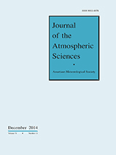
JOURNAL OF THE ATMOSPHERIC SCIENCES
Scope & Guideline
Transforming Knowledge into Atmospheric Understanding
Introduction
Aims and Scopes
- Climate Change and Variability:
Research focusing on the impacts of climate change on atmospheric conditions, including temperature, precipitation patterns, and the frequency of extreme weather events. This area often involves long-term climate simulations and observational studies. - Weather Prediction and Modeling:
Developing and evaluating numerical weather prediction models, including high-resolution simulations, ensemble forecasting techniques, and machine learning applications to improve prediction accuracy for various weather phenomena. - Atmospheric Dynamics and Thermodynamics:
Investigating the fundamental processes governing atmospheric behavior, including the dynamics of tropical cyclones, monsoons, and other large-scale weather systems, as well as the thermodynamic interactions within the atmosphere. - Air Quality and Pollution:
Studies addressing air pollution, its sources, and its effects on health and climate. This includes the assessment of particulate matter (PM2.5, PM10) and the impact of urbanization on air quality. - Hydrometeorology and Precipitation Processes:
Research on the processes governing precipitation formation, distribution, and variability, including studies on rainfall events, snow cover, and hydrological modeling in various geographical contexts. - Remote Sensing and Observational Techniques:
Utilizing satellite and ground-based observational data to study atmospheric phenomena, including the application of advanced techniques in radar and satellite meteorology. - Interdisciplinary Approaches:
Integrating knowledge from related fields such as ecology, urban planning, and public health to address complex atmospheric issues, including urban heat islands, climate adaptation, and disaster management.
Trending and Emerging
- Extreme Weather Events and Their Impacts:
An increasing number of studies focus on understanding the mechanisms, predictability, and societal impacts of extreme weather events, such as heavy rainfall, heatwaves, and typhoons, aligning with global concerns regarding climate resilience. - Machine Learning and Data Science Applications:
The integration of machine learning techniques for weather prediction, data assimilation, and climate modeling has gained momentum, showcasing innovative approaches to improve accuracy and efficiency in atmospheric research. - Urban Climate and Heat Island Studies:
Research on urban heat islands, their dynamics, and mitigation strategies is on the rise, reflecting growing concerns about urbanization's impact on local climates and public health. - Multi-Scale Climate Interactions:
There is a trend towards studying climate interactions across different scales, from local to global, including the effects of teleconnections and regional climate phenomena on local weather patterns. - Climate Change and Societal Adaptation:
Emerging research emphasizes the need for understanding climate change impacts on human systems and developing adaptive strategies, particularly in vulnerable regions. - Atmospheric Pollution and Health Effects:
An increasing focus on the relationship between atmospheric pollution, climate change, and public health, highlighting the need for interdisciplinary research that informs policy and public health initiatives.
Declining or Waning
- Traditional Climate Attribution Studies:
Research that solely focuses on attributing specific weather events to climate change has become less prominent, as newer methodologies emphasize a more integrated understanding of climate systems and their interactions. - General Climate Trends without Local Context:
Publications that present broad climate trends without specific regional analysis or implications have decreased. There is now a stronger emphasis on localized studies that consider unique geographical and socio-economic contexts. - Static Modeling Approaches:
The reliance on traditional static modeling techniques without incorporating dynamical systems or machine learning approaches has waned, as newer, more adaptive methodologies gain traction in atmospheric modeling. - Overly Simplified Air Quality Assessments:
Studies that provide a simplistic view of air quality issues without considering the complex interactions of meteorological, chemical, and biological factors have become less common, as the field moves towards more comprehensive analyses.
Similar Journals
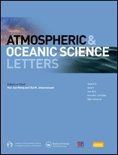
Atmospheric and Oceanic Science Letters
Unlocking the Secrets of Our Planet's SystemsAtmospheric and Oceanic Science Letters is a premier open-access journal dedicated to the rapidly evolving fields of atmospheric science and oceanography. Published by KEAI PUBLISHING LTD, this journal aims to foster research dissemination and collaboration by providing a platform for high-quality research articles, reviews, and case studies that address critical issues impacting atmospheric and oceanic systems. With an impressive impact factor reflecting its esteemed position—including being ranked Q2 in Atmospheric Science and Q1 in Oceanography in 2023—this journal is an essential resource for researchers, professionals, and students alike. The journal's Open Access model, adopted since 2016, ensures that groundbreaking research is readily available to a global audience, enhancing knowledge transfer and facilitating innovative solutions to environmental challenges. Operating out of the United Kingdom and reaching an international readership, Atmospheric and Oceanic Science Letters plays a pivotal role in shaping our understanding of the interactions between the atmosphere and oceans, making it a vital publication for anyone aiming to stay at the forefront of these dynamic scientific fields.

JOURNAL OF GEOPHYSICAL RESEARCH-ATMOSPHERES
Navigating the evolving landscape of atmospheric research.JOURNAL OF GEOPHYSICAL RESEARCH-ATMOSPHERES, published by the American Geophysical Union, is a leading peer-reviewed journal dedicated to advancing our understanding of atmospheric science and related disciplines. With an impressive impact factor and consistently holding a Q1 ranking across key categories including Atmospheric Science and Geophysics, this esteemed journal caters to a global audience of researchers, professionals, and students eager to explore groundbreaking studies and insights. The journal covers a comprehensive scope of topics, from climate dynamics to atmospheric processes, enhancing knowledge and informing practices within the realm of Earth and Planetary Sciences. With its strong emphasis on quality research, it remains a vital resource for those engaged in unraveling the complexities of our planet’s atmosphere. Explore this journal to stay abreast of significant developments and foster a deeper understanding in this ever-evolving field.
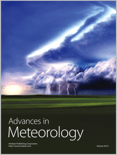
Advances in Meteorology
Unlocking the Secrets of the AtmosphereAdvances in Meteorology is a renowned open-access journal published by Hindawi Ltd, dedicated to the dynamic field of meteorology and related atmospheric sciences. Since its inception in 2009, this journal has served as a vital platform for researchers and professionals, facilitating the dissemination of cutting-edge research that advances our understanding of atmospheric phenomena. With a commendable impact in the realms of Geophysics, Atmospheric Science, and Environmental Pollution, it boasts impressive Scopus rankings—34th percentile in Geophysics, 54th in Atmospheric Science, and 61st in Environmental Pollution—highlighting its significance and relevance in these critical areas. The journal's commitment to open access ensures that vital research reaches a wide audience, fostering collaboration and innovation within the scientific community. Positioned with a mix of rigorous research and interdisciplinary approaches, Advances in Meteorology continues to shape the landscape of atmospheric science research from its base in Egypt, addressing pressing global challenges related to climate and environment.

ATMOSFERA
Illuminating Climate Challenges Through Rigorous ResearchATMOSFERA is a prestigious journal published by CENTRO CIENCIAS ATMOSFERA UNAM, dedicated to advancing the field of Atmospheric Science. With an ISSN of 0187-6236 and an E-ISSN of 2395-8812, this bilingual journal has been a vital resource for researchers since its inception in 1988. Located in Mexico City, the journal serves as a platform for high-quality original research, reviews, and case studies that explore various atmospheric phenomena, climate issues, and environmental challenges. Although currently categorized in the Q4 quartile of Atmospheric Science, ATMOSFERA aims to contribute to the growing body of knowledge in the field and improve its ranking over the next few years, emphasizing rigorous scientific inquiry and fostering collaboration among scholars. Its accessibility and commitment to open communication make it an essential reference for professionals and students striving to understand and address complex atmospheric dynamics.
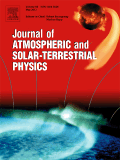
JOURNAL OF ATMOSPHERIC AND SOLAR-TERRESTRIAL PHYSICS
Charting New Frontiers in Geophysics and Space ResearchJournal of Atmospheric and Solar-Terrestrial Physics, published by Pergamon-Elsevier Science Ltd, stands as a pivotal academic resource in the realms of Atmospheric Science, Geophysics, and Space and Planetary Science. With an ISSN of 1364-6826 and an E-ISSN of 1879-1824, this journal encompasses a robust collection of research findings and reviews that address the intricacies of atmospheric processes and solar-terrestrial interactions. The journal has shown consistent academic performance, earning commendable rankings in 2023, including Q3 in Atmospheric Science and Q2 in Geophysics, reflecting its importance for scholarly communication and advancement in these fields. Spanning an impressive convergence of research from 1997 to 2024, it aims to foster interdisciplinary collaboration and inspire innovations among researchers, professionals, and students. Although it currently does not offer open access, the journal is committed to disseminating high-quality content that continues to drive forward our understanding of complex environmental phenomena.
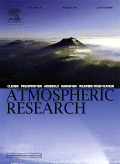
Atmospheric Research
Elevating Knowledge in Atmospheric ResearchAtmospheric Research is a premier journal published by Elsevier Science Inc, specializing in the field of Atmospheric Science. With a commendable impact factor, it holds a distinguished position in the Scopus rankings, being placed 14th out of 148 journals within its category and achieving a remarkable 90th percentile rank. This journal serves as a vital outlet for rigorous research on atmospheric processes, climate variability, and meteorological phenomena, providing a platform for scientists, researchers, and students to disseminate their findings and contribute to the advancement of knowledge in this critical field. Although it is not an open-access journal, its strong reputation and selective publication criteria ensure that only high-quality and impactful studies are featured. Since its inception in 1986, Atmospheric Research has continuously evolved to meet the dynamic nature of atmospheric studies, making it a fundamental resource for anyone engaged in understanding and addressing atmospheric challenges worldwide.

Atmospheric Science Letters
Empowering global collaboration in atmospheric science.Atmospheric Science Letters, published by WILEY, is a leading open-access journal in the field of Atmospheric Science. Since its establishment in 2000, it has significantly contributed to advancing knowledge related to the Earth's atmosphere, focusing on both theoretical and practical aspects. With an impressive Q2 ranking in the Atmosphere Science category as of 2023 and a Scopus rank of 62 out of 148, this journal provides a platform for researchers and professionals to share their findings and insights. The journal’s commitment to open access since 2016 ensures that cutting-edge research is accessible to a global audience, fostering collaboration and innovation in the atmospheric sciences. Addressed from its headquarters at 111 River St, Hoboken, NJ, USA, Atmospheric Science Letters is pivotal for students, researchers, and professionals seeking to stay abreast of the latest developments in this dynamic field.

JOURNAL OF THE METEOROLOGICAL SOCIETY OF JAPAN
Fostering Collaboration in Environmental ScienceJournal of the Meteorological Society of Japan, ISSN 0026-1165 (E-ISSN 2186-9057), is a leading academic journal published by the Meteorological Society of Japan, dedicated to advancing the field of atmospheric sciences. Established in 1905, the journal has a long-standing tradition of publishing high-quality research that contributes to our understanding of meteorology, climatology, and environmental science. As an Open Access journal since 2018, it ensures wide dissemination of knowledge, allowing researchers, professionals, and students to access cutting-edge studies without barriers. With an impressive impact factor and ranked in the Q1 category in Atmospheric Science, it is recognized for its significant contributions, currently holding a Scopus rank of #36 out of 148 in the field. The journal serves as a vital resource for those involved in meteorological research, policy-making, and education, fostering collaboration and innovation within and beyond Japan.

Journal of Tropical Meteorology
Illuminating Climate Patterns in Tropical RegionsJournal of Tropical Meteorology, published by JOURNAL OF TROPICAL METEOROLOGICAL PRESS, is a leading scholarly journal dedicated to advancing the understanding of atmospheric phenomena and meteorological patterns in tropical regions. With an ISSN of 1006-8775, this journal plays a vital role in disseminating high-quality research, focusing on critical issues such as climate variability, weather forecasting, and tropical cyclone dynamics. The journal, which is indexed in Scopus with a respectable rank in the low quartile of Q3 in Atmospheric Science, aims to provide a platform for researchers and professionals to share groundbreaking insights and foster collaboration within the scientific community. Although it follows a traditional access model, the Journal of Tropical Meteorology encourages submissions from a diverse range of disciplines, thus enriching the field with a variety of perspectives. By bridging theory and practical applications, this journal serves as an essential resource for students, researchers, and practitioners striving to expand their knowledge and contribute to the global conversation on meteorology.
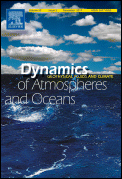
DYNAMICS OF ATMOSPHERES AND OCEANS
Navigating the Complexities of Earth's SystemsDYNAMICS OF ATMOSPHERES AND OCEANS, published by Elsevier, is a renowned journal that has established itself as a vital resource in the fields of atmospheric science, oceanography, and geology. With a rich publication history stretching from 1976 to 2024, this journal provides a platform for high-quality research that addresses the complex interactions between the atmosphere and oceans, which are critical to understanding climate change and environmental systems. It enjoys a respectable impact factor and a reputable position within its category quartiles, specifically noted as Q2 in critical domains such as Computers in Earth Sciences and Oceanography. Researchers and professionals benefit from its indexed coverage, featuring a Scopus ranking that places it among the leading journals in its categories. Although it is not an open-access journal, readers can access its cutting-edge articles through institutional subscriptions or individual purchases. The journal aims to foster cross-disciplinary dialogue and innovation by publishing original research, reviews, and insightful commentary, making it a cornerstone for scholars, students, and practitioners committed to advancing knowledge in the dynamic interplay of Earth's atmospheric and oceanic systems.